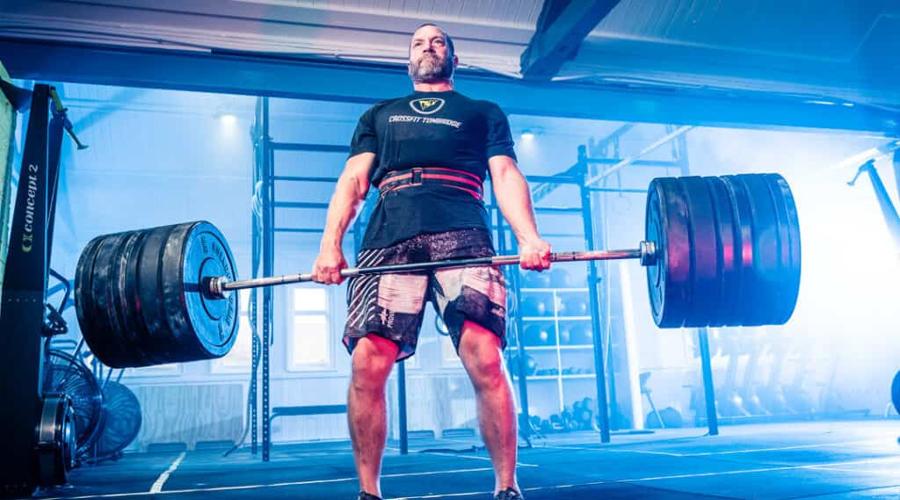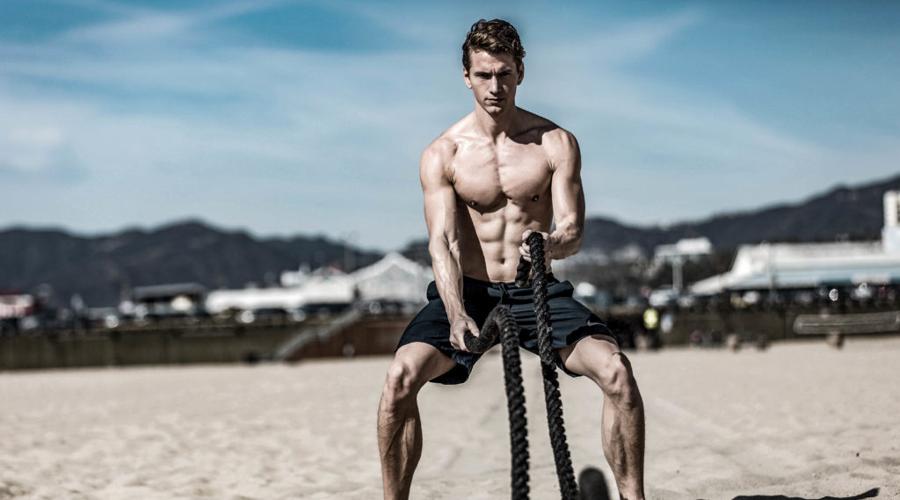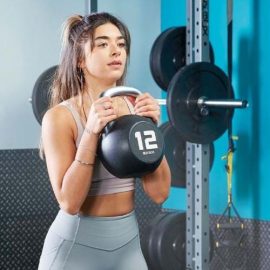
Are you tired of going to the gym and not seeing the muscle gains you were hoping for? Have you considered trying CrossFit to build muscle, but aren’t sure if it’s effective? Look no further. In this ultimate guide, we will answer the age-old question: Does CrossFit build muscle?
CrossFit has become a popular fitness trend in recent years, boasting high-intensity workouts that combine weightlifting, cardio, and gymnastics. While some people swear by CrossFit as the ultimate muscle-building workout, others are skeptical about its effectiveness. In this post, we will examine the science behind CrossFit and muscle growth, and provide you with tips and techniques to help you maximize your muscle gains. We will also address common misconceptions about CrossFit, such as whether it is only for elite athletes or if it can cause injury. By the end of this guide, you will have a comprehensive understanding of how CrossFit can help you build muscle, and the tools you need to succeed in your fitness journey.
The Science of Muscle Building: How Does CrossFit Work?
When it comes to building muscle, CrossFit incorporates two primary mechanisms: mechanical tension and metabolic stress. Mechanical tension refers to the force placed on your muscles during resistance training, while metabolic stress refers to the accumulation of metabolites (such as lactate) that occur during high-intensity exercise. CrossFit workouts are designed to create high levels of both mechanical tension and metabolic stress, with the goal of maximizing muscle growth.
One way CrossFit achieves mechanical tension is through the use of compound exercises. These exercises, such as squats and deadlifts, involve multiple joints and muscle groups, which creates more overall tension and force on the muscles being worked. Additionally, CrossFit workouts often incorporate high-rep sets, which lead to more time under tension and further increases in mechanical stress on the muscles.

In terms of metabolic stress, CrossFit workouts often use high-intensity intervals, which can create a significant buildup of metabolites in the muscles being worked. This metabolic stress has been shown to increase muscle fiber activation and stimulate protein synthesis, which are key drivers of muscle growth. Overall, the combination of mechanical tension and metabolic stress in CrossFit workouts make it an effective way to build muscle.
Benefits of CrossFit for Muscle Building
CrossFit is a highly effective way to build muscle due to its unique combination of resistance training, high-intensity intervals, and functional movements. Here are some specific benefits of CrossFit for muscle building:
- Compound exercises: CrossFit workouts often include compound exercises, which use multiple joints and muscle groups at the same time. This type of exercise creates more overall tension and force on the muscles being worked, leading to greater muscle growth.
- High-intensity intervals: CrossFit workouts frequently use high-intensity interval training (HIIT) techniques, which have been shown to increase muscle fiber activation and stimulate protein synthesis. This means that your muscles are working harder and more efficiently during each workout, leading to greater muscle growth.
- Functional movements: Many CrossFit exercises are based on functional movements, such as lifting, jumping, and pulling. These movements mimic everyday activities and can help improve your overall strength and coordination, making it easier to perform other physical activities outside of the gym.
- Varied workouts: CrossFit workouts are designed to be constantly varied, which helps prevent plateaus and keeps your muscles guessing. By constantly challenging your muscles in new ways, you can continue to make progress and build muscle over time.
Overall, CrossFit provides a comprehensive and challenging workout that can help you build muscle, improve your overall fitness, and achieve your health and wellness goals.
Common Myths About CrossFit and Muscle Growth
CrossFit has been the subject of many myths and misconceptions when it comes to muscle growth. Here are some of the most common myths about CrossFit and muscle building:
- Myth: CrossFit is only for elite athletes. Reality: CrossFit is designed for people of all fitness levels, from beginners to advanced athletes. The workouts can be scaled and modified to meet the needs of each individual, making it a great option for anyone looking to build muscle.
- Myth: CrossFit is dangerous and leads to injury. Reality: Any form of exercise has the potential for injury if not performed properly. However, when done with proper form and technique, CrossFit can be a safe and effective way to build muscle.
- Myth: CrossFit is not as effective as traditional bodybuilding. Reality: CrossFit may look different from traditional bodybuilding, but it can be just as effective (if not more so) for building muscle. The combination of resistance training and high-intensity intervals in CrossFit can create the ideal conditions for muscle growth.
- Myth: CrossFit workouts are too short to be effective for muscle building. Reality: While some CrossFit workouts may be short, they are often designed to be highly intense and effective for building muscle. Additionally, CrossFit workouts are typically done in a group setting, which can help increase motivation and accountability.
By understanding and debunking these common myths about CrossFit and muscle building, you can better understand the true benefits and potential of this type of workout.

How to Get the Most Out of Your CrossFit Workouts for Muscle Building
If you’re looking to build muscle with CrossFit, there are several key strategies you can use to get the most out of your workouts. Here are some tips for maximizing your muscle gains with CrossFit:
- Focus on compound exercises: As mentioned earlier, compound exercises are highly effective for building muscle. Focus on exercises like squats, deadlifts, and bench presses, which target multiple muscle groups at once.
- Increase weight gradually: In order to build muscle, you need to challenge your muscles with progressively heavier weights over time. However, it’s important to increase weight gradually to avoid injury and ensure proper form.
- Use high-intensity intervals strategically: High-intensity intervals can be a powerful tool for building muscle, but they should be used strategically. Incorporate HIIT techniques into your workouts 1-2 times per week, rather than every day.
- Focus on proper nutrition: Proper nutrition is essential for building muscle. Make sure you are consuming enough protein and calories to support your muscle-building goals.
- Allow for adequate rest and recovery: Building muscle requires not only challenging your muscles, but also allowing them time to rest and recover. Make sure you are getting enough sleep and taking rest days as needed.
By incorporating these strategies into your CrossFit workouts, you can optimize your muscle-building potential and achieve your fitness goals.
Read more info about trenbolone enanthate cycle
Nutrition and CrossFit: The Ultimate Muscle Building Combo
Nutrition plays a crucial role in building muscle with CrossFit. In order to build muscle, you need to consume enough calories and protein to support muscle growth and repair. Here are some tips for optimizing your nutrition for muscle building with CrossFit:
- Eat enough calories: In order to build muscle, you need to consume more calories than you burn. This is known as a calorie surplus. Use a calorie calculator to determine your daily calorie needs, and aim to consume 250-500 calories above that number to support muscle growth.
- Focus on protein: Protein is essential for muscle growth and repair. Aim to consume 1-1.5 grams of protein per pound of body weight each day. Good sources of protein include meat, fish, eggs, dairy, and plant-based sources such as beans and tofu.
- Time your meals strategically: Eating protein and carbohydrates before and after your CrossFit workouts can help fuel your muscles and support recovery. Aim to eat a meal or snack containing protein and carbohydrates within 30 minutes before and after your workout.
- Stay hydrated: Proper hydration is important for muscle function and recovery. Aim to drink at least 8-10 cups of water per day, and more if you are exercising heavily.
- Consider supplements: While supplements are not necessary for muscle building, they can help support your nutrition and muscle-building goals. Consider supplements such as whey protein powder, creatine, and branched-chain amino acids (BCAAs).
By optimizing your nutrition for muscle building with CrossFit, you can support your body’s muscle-building potential and achieve your fitness goals.
Read more about trenbolone enanthate results
The Importance of Rest and Recovery for Building Muscle with CrossFit
Rest and recovery are just as important as exercise when it comes to building muscle with CrossFit. During exercise, your muscles undergo micro-tears, which then repair and grow stronger during rest periods. Here are some tips for optimizing your rest and recovery for muscle building with CrossFit:
- Take rest days: Rest days are essential for allowing your muscles to recover and grow. Aim to take at least one or two rest days per week, and listen to your body to determine if you need more.
- Sleep well: Sleep is crucial for muscle recovery and growth. Aim to get 7-8 hours of quality sleep each night to support your muscle-building goals.
- Stretch and foam roll: Stretching and foam rolling can help improve flexibility, reduce muscle soreness, and prevent injury. Incorporate stretching and foam rolling into your rest days or after your workouts.
- Stay active on rest days: While it’s important to take rest days, that doesn’t mean you have to be completely inactive. Engage in low-intensity activities such as walking, yoga, or light stretching to keep your body active and promote blood flow.
- Listen to your body: Everyone’s body is different, so it’s important to listen to your body and adjust your workouts and recovery strategies accordingly. If you feel sore or fatigued, take an extra rest day or reduce the intensity of your workouts.
By prioritizing rest and recovery in addition to your workouts, you can optimize your muscle-building potential with CrossFit and achieve your fitness goals.

CrossFit vs. Traditional Bodybuilding: Which is Better for Muscle Building?
When it comes to building muscle, CrossFit and traditional bodybuilding have different approaches and techniques. Here are some key differences between the two, and which might be better for muscle building:
- Exercise selection: Traditional bodybuilding tends to focus on isolation exercises, where each muscle group is worked individually with a specific exercise. CrossFit, on the other hand, focuses more on compound exercises that use multiple muscle groups at once. Compound exercises can lead to more overall muscle growth, making CrossFit a better choice for those looking to build muscle.
- Training intensity: Both CrossFit and bodybuilding can be highly intense, but the approach to intensity is different. Bodybuilding typically involves longer rest periods between sets, while CrossFit workouts are designed to be completed in shorter time frames with shorter rest periods. This high-intensity approach can be highly effective for muscle building, making CrossFit a good choice for those who prefer shorter workouts and want to challenge themselves.
- Nutrition: Both CrossFit and bodybuilding require proper nutrition for muscle building. Bodybuilders typically follow strict diets that focus on specific macronutrient ratios, while CrossFit tends to have a more flexible approach to nutrition. While proper nutrition is important for both, the strictness of bodybuilding diets may not be necessary for those just looking to build muscle.
Read More About Anadrol Results after 1 Week
Overall, both CrossFit and traditional bodybuilding can be effective for muscle building, but CrossFit’s focus on compound exercises and high-intensity workouts may make it a better choice for those looking for a more efficient and challenging workout. However, the choice ultimately comes down to personal preference and fitness goals.



